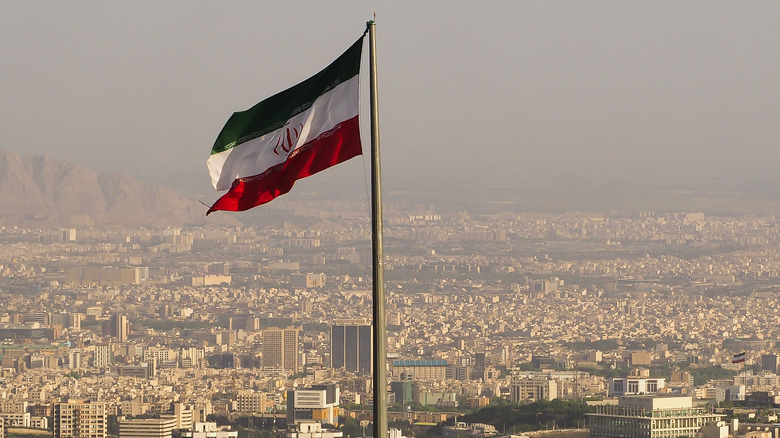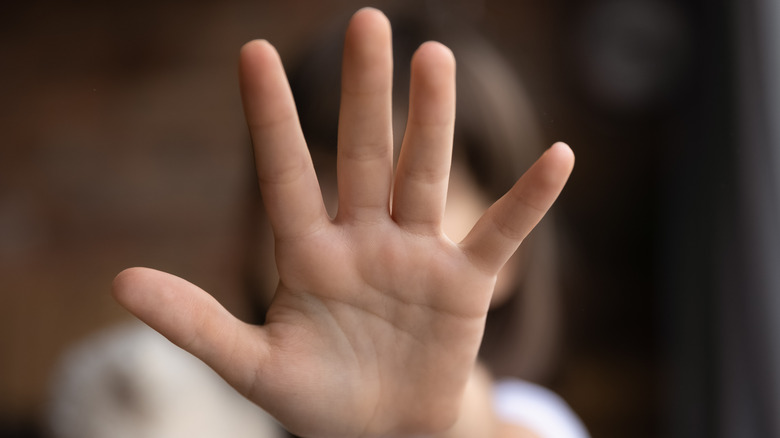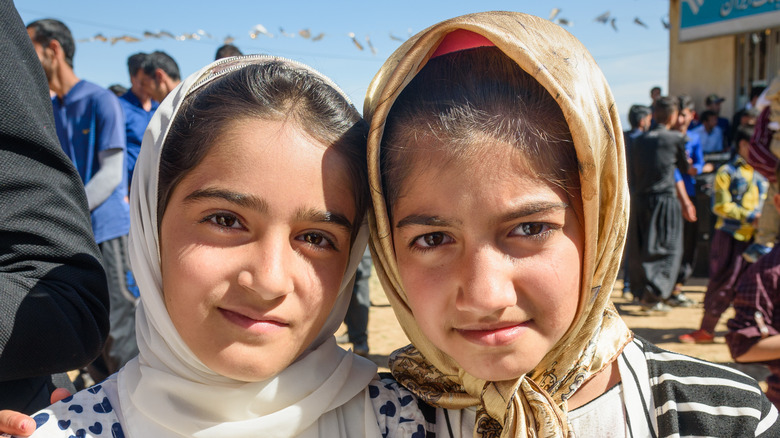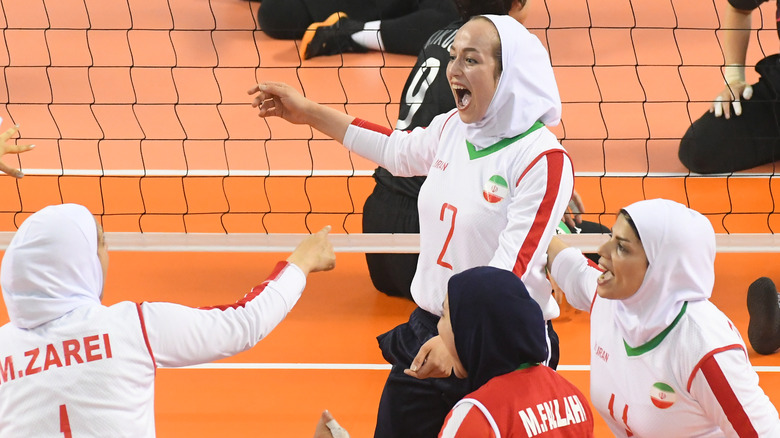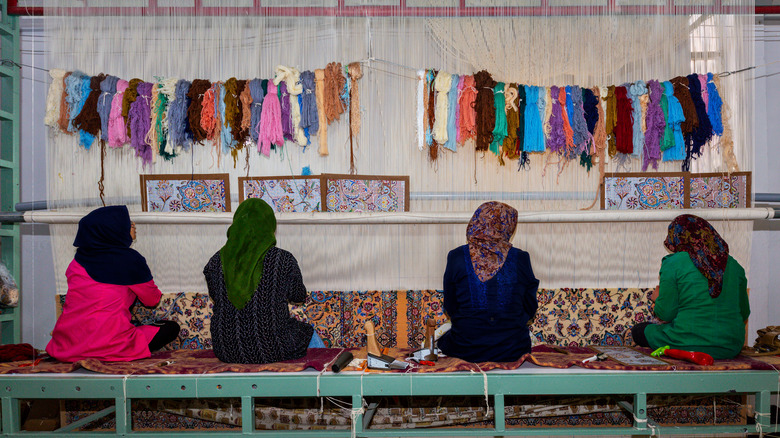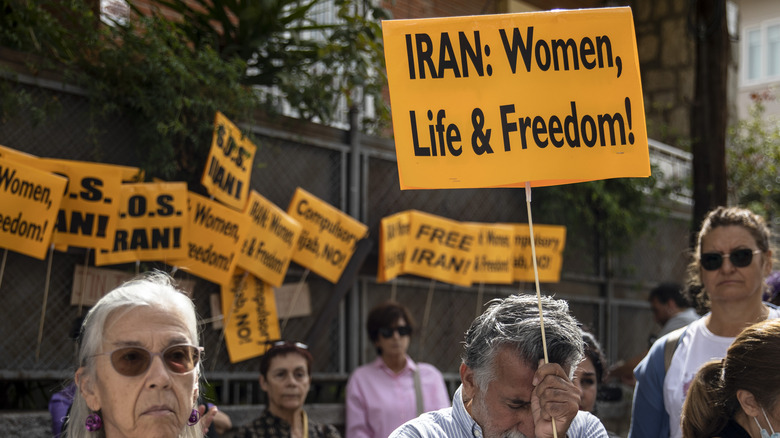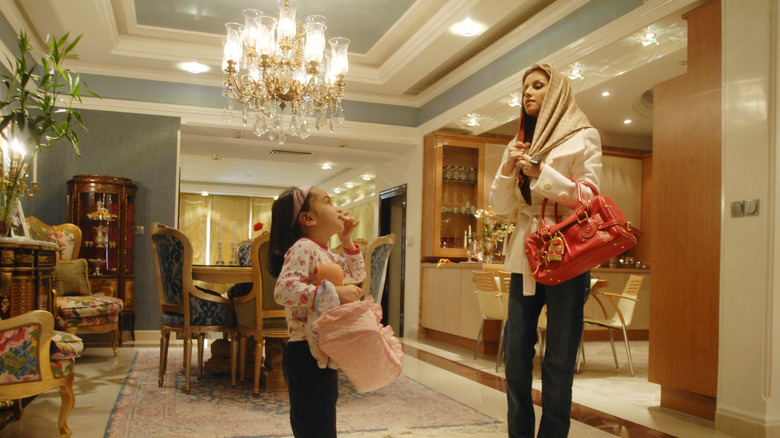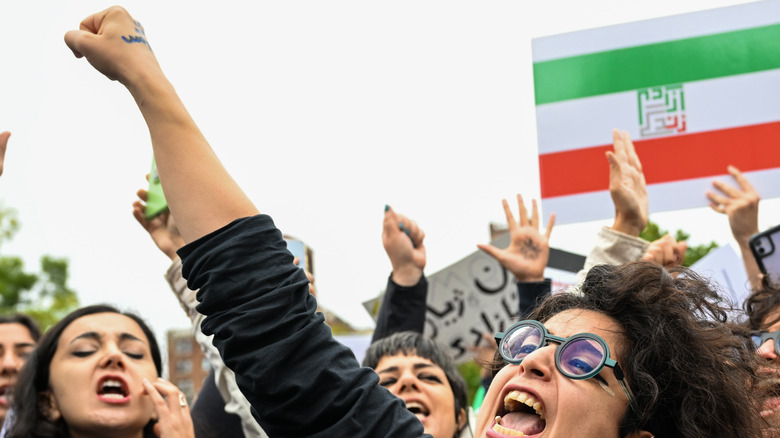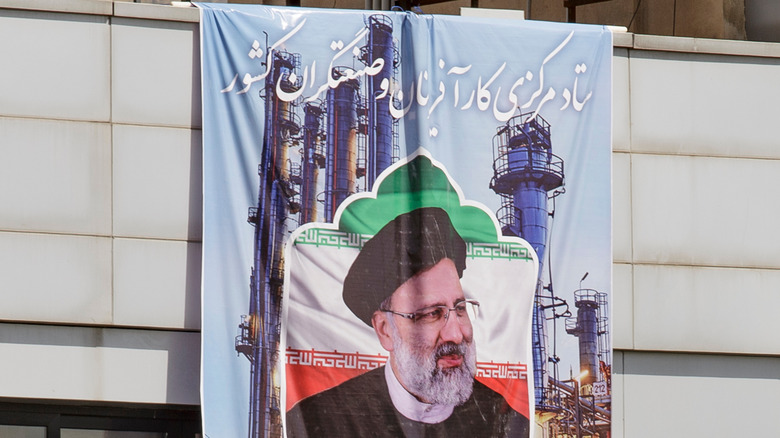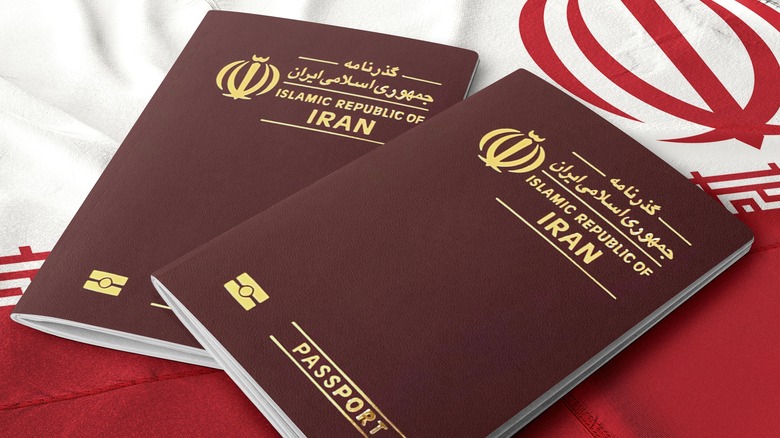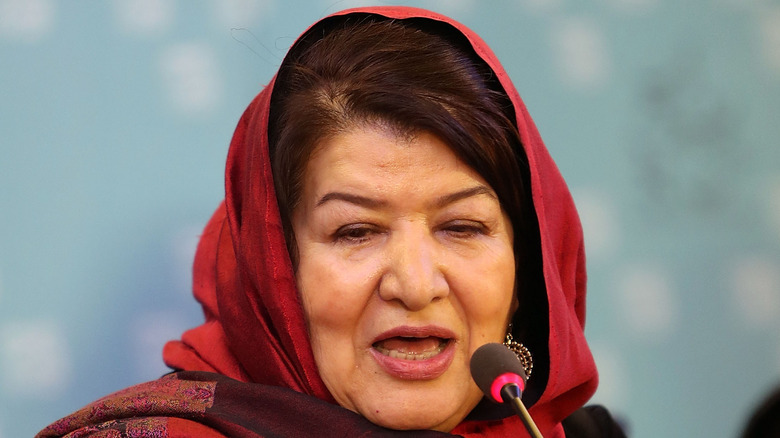What It's Like To Be A Woman In Iran
Iranian women have rarely had it easy. Like many huge social upheavals, the Iranian Revolution of 1979 led to changes that saw some groups triumph and others become increasingly marginalized. The more progressive tendencies that were common during life under the Shah, including progressive education and dress policies for women, disappeared in an instant.
After the revolution, a constitution was adopted that guaranteed men and women equal rights under Article 20, yet the country continued to follow Sharia Law, which has been criticized for promoting gender inequality. The result has been that women in Iran can almost certainly never divorce if they marry, attend college without the consent of their partner, and risk being jailed if they are seen without some type of headscarf.
However, surface-level perceptions of an entire country rarely convey the nuances of inequality. Wealthier women in Iran with fathers in high positions face little pressure to cover up, so much so that the blatant disparities in treatment have led to girls as young as 13 taking to the streets to protest the death of Mahsa Amini in police custody on September 16, 2022 (via The New York Times). The recent anti-hijab demonstrations have put the spotlight back on women's rights in Iran — not for the first time, or the last. Here's a glimpse into what life is like for a woman in Iran.
Domestic violence is common
Women in Iran can face being murdered by relatives, especially if they are thought to have "dishonored" their families. One gruesome example highlighted in a report from the UN Human Rights Office of the High Commissioner (OHCR) is the 2020 case of one man who beheaded his daughter with a farm sickle while she was sleeping as punishment for her dating a man he thought was unsuitable. The father had sought legal advice in advance to check that the murder would not carry the death penalty (it didn't). By contrast, the BBC reports that a 26-year-old woman was hanged six years earlier for killing a man she said was sexually assaulting her.
According to the Middle East Institute, Iranian women are regarded under the political system as "half" as valuable as men. In 2020, it came to light when a video surfaced of a blood-soaked girl being beaten that one of the men attacking her was sent to end an altercation between the woman and the man she said had assaulted her. In a video series where she was seen trying to defend herself, her father's input was to say that his daughter had mental health issues — thereby delegitimizing her testimony.
In 2021, a UN expert (via OHCR) criticized a recent anti-violence bill for not going far enough. Although the expert lauded some new protections for acid attack victims, they noted that overall there weren't enough provisions included to safeguard women and children from violence.
If you or someone you know is dealing with domestic abuse, you can call the National Domestic Violence Hotline at 1−800−799−7233. You can also find more information, resources, and support at their website.
There are thousands of child marriages each year
A report from the United Nations expressed grave concerns about rates of child marriage in Iran. Girls as young as 13 can marry in Iran, but those who are younger can still marry with consent from a judge and their father. Government figures from 2021 showed that 16,000 girls between 10 and 14 were married off in the first half of the year. For boys, the legal age for marriage is only slightly higher, at 15.
In "The Heartbeat of Iran" (via Glamour Magazine), Tara Kangarlou talks about marrying a 30-year-old man at age 12. By 14, she was a mother. She reports feeling scared of her husband and terrified when she became pregnant. She was not allowed to attend school. When her husband died in a car accident, she was left in a state of near destitution with her two sons. Although she could have remarried, most men wanted her to give up her children to ease their economic burden.
A 2021 report from the Human Rights Council expressed concern that Iran was not raising the age of child marriage. It recommended doing this so that Iran would be in line with the United Nations Convention on the Rights of the Child. Concerns around child marriage center on how it hampers the ability of girls to secure educational and professional opportunities later in life, as well as to protect them from violence and domestic abuse.
If you or someone you know is dealing with domestic abuse, you can call the National Domestic Violence Hotline at 1−800−799−7233. You can also find more information, resources, and support at their website.
Women cannot be in the same public places as men
There are intense restrictions on where women can go and what they can do outside of the home in Iran. According to Human Rights Watch, men's sports stadiums are one of the many places women are not allowed, including the popular sport of volleyball. Women can play sports, including football and volleyball, but they cannot watch male relatives play. Ghoncheh Ghavami, a 25-year-old Iranian-British woman, was once arrested for trying to be a spectator at a volleyball game in Tehran. Police even patrol the stadiums regularly to ensure women do not attend.
In 2015, Human Rights Watch launched the #Watch4Women campaign, which called for the International Volleyball Association to boycott tournaments in Iran unless women were allowed to attend. Although the ban is still in place, some concessions were made in 2017 when, as highlighted by Villanova University, some women were allowed to watch volleyball matches. In 2018, women were similarly allowed to watch a live screening of the Iranian football team playing in the World Cup.
But the discrimination doesn't stop at sports matches. Musicians can also be arrested for having female dancers and singers accompany them. Reuters reported on how musician Mahdi Rajabian was arrested in 2020 for planning a performance with women singing and dancing. He had already been jailed on two previous occasions for the same reason.
Women can be imprisoned for protesting compulsory veiling
After the 2022 police custody death of Mahsa Amini, Iran and the world at large saw the latest uprising of women and girls boycotting mandatory head coverings. The New York Times describes how schoolchildren as young as 13 were seen flagrantly tearing off their school uniform head coverings and waving them around in the streets before burning them, defying attempts by the police to quash the protests.
Amini was arrested for wearing an "improper hijab", even though in the video footage of the arrest it is unclear how she was deviating from Iran's punitive dress code. It consists of a headscarf and a lengthy tunic which is seen to conform to ideas about "modest fashion," as decreed by the religious authorities in Iran, according to The New York Times.
This isn't the first time women and girls have pushed back against the mandatory hijab. In 2019, three women who protested in public against being forced to dress in this way were jailed — a move condemned by the UN. A video had been released showing the bare-headed women handing out flowers as a peaceful protest for International Women's Day. One of them was given a prison sentence of 23 years and six months, while the other two were sentenced to 16 years. Since early 2018, around 32 people have been arrested for protesting the hijab and another 10 have been thrown in jail.
Men come first, inside and outside the home
When it comes to their domestic lives, women in Iran lead a heavily prescribed existence. The civil code of Iran (via Cornell Law School) states that children born to an Iranian man will always be Iranian citizens, even though the same is not true for Iranian women who marry foreign men. Men are also legally considered to be heads of the household. Although this obliges married men to provide their wives with food, clothing, and shelter, women are in turn legally compelled to satisfy their husbands' sexual needs.
Furthermore, a man can divorce his wife "whenever he wishes to do so," while women can only do so in special circumstances. A man is legally allowed to kill his wife and her lover if he suspects her to have been unfaithful, or to just kill the man if he feels his wife was coerced. Other disadvantages include a woman's testimony being worth half of a man's in court, men automatically being granted custody of children, and sisters only being able to inherit half of what their brothers might, as stated by the Middle East Institute. Iranian women have some reproductive rights. According to the American-Iranian Council, despite restrictions on abortion and birth control, expectant and nursing mothers are entitled to nine months of maternity leave and cannot be fired from their jobs for being parents.
Wealthy women enjoy more freedom
These circumscribed lives don't apply to everyone. The New York Times highlights how in fashionable and upmarket areas of Tehran, women enjoy many of the same privileges as men, particularly in terms of dress and public presence. For those whose fathers hold influential political positions, the country's "morality police" rarely cross their paths, knowing that to do so could threaten their careers and even their lives.
The same is not the case in poorer areas, where rules on female attire are applied in a far more arbitrary way. Although the Iranian penal code (via Cornell Law School) states that women caught showing their hair can be fined or imprisoned for between 10 days and two months, the violent response to Mahsa Amini, whose bruise-covered corpse at the hand of the authorities kicked off the wave of protests, shows how inconsistently the law has been applied. The Guardian points out how it's not just the strict legislation behind the fiery protests. They are also a byproduct of Iran's struggling economy, corruption, and flagrant hypocrisy among its ruling classes. Many of the people enforcing the mandatory hijab law have children living abroad without restrictions on their clothing, contributing to this building sense of a double standard. In other words, the struggle for equality in Iran is about class as much as gender.
Workplace discrimination and harassment are rampant
Iranian women face many (legalized) disadvantages in the workplace. They can be prevented from working by their husbands due to the legal stipulation that men have control over the household, per Human Rights Watch. Accessing state benefits in Iran is also difficult for women who cannot prove they are their children's only guardian or that their husband is unemployed.
Although Iranian law prohibits discrimination at work, discriminatory hiring practices are not illegal. Job advertisements often express preferences for applicants of one gender, with around 60% of public sector vacancies stating that they prefer male candidates to apply. Although efforts were made in 2017 to expand the number of places available to women, Human Rights Watch said this didn't go far enough. Women with families, for example, do enjoy some workplace protections under the law. But the organization also found that 47,000 women had reported being fired for taking advantage of their maternity leave allowance. The New York Times drew further attention to how women described things like being expected to sleep with their boss and send in pictures of their bodies to secure employment.
Yet despite this, the American-Iranian Council points to how women's place in the workforce is improving. Between 1990 and 2020, the percentage of women in the workforce rose from 10.5% to 16.8%. More than half of those in the service industry are female, while large numbers of women also work in medicine, agriculture, and higher education.
Women can run for president ... technically
The Tehran Times reported in 2020 that women could register to run in the 2021 presidential elections. However, the paper also highlighted that Guardian Council spokesman Abbas Ali Kadkhodaei clarified that this was a part of "cultural discussions" happening in Iran that would not be resolved by changes in the law.
The Asia Times points out that women have never been explicitly barred from becoming president. However, Article 115 of Iran's constitution states that the president must be a "rijal," a word in Arabic that for 40 years has been translated to mean "man." As of 2017, women hold only 5.8% of the seats in the Iranian parliament, and all the female candidates who tried to run for president that year were turned down by the Guardian Council, per Human Rights Watch.
However, the change in interpretation was thought to be a way to increase voter turnout, which had been flagging in response to the growing disillusionment among the electorate over Iran's economic crisis and the ruling elite's mishandling of the Covid-19 pandemic. Global Citizen draws attention to how some observers have therefore said the new emphasis is a cynical PR move that won't lead to lasting change. This prediction was supported by the outcome of the 2021 election, which France 24 reports as consisting of seven male candidates. The winner was the hardline conservative Ebrahim Raisi.
They need permission to travel abroad
One of the biggest barriers facing the professional development of Iranian women is their lack of freedom of movement. Although women can excel in areas such as professional sports, it is harder for them to travel and compete as they need a man's permission to do so.
Human Rights Watch describes how even when a wife's permission to travel is written into a marriage contract, her husband's written consent must be provided with any application for a passport. Furthermore, if a wife succeeds in gaining his permission, her husband can still withdraw it at any time, for any reason. There have been occasions when this has been lifted for emergency reasons. However, the general trend has been to push for more restrictions, such as in 2012, when then-president Mahmoud Ahmadinejad proposed an amendment to the law restricting the freedom of movement for unmarried as well as married women, ensuring that they would need their "legal guardian" to grant permission first.
These prohibitions have notably applied to Iranian sports stars, such as members of the women's football team. The team captain, Niloufar Ardalan, was forbidden by her husband in 2015 from competing abroad. As a result, she was unable to compete in a tournament in Malaysia. Two years later, Zhara Nemati, a member of the national paralympic team, was also banned from traveling by her estranged husband. In both cases, the travel bans were loosened, but only after an appeal to the government.
Women in Iran can and do attend university
The British-Iranian writer Kamin Mohammadi warned in The Guardian against Westerners buying into the "toxic" narratives that have pitted Iran against Europe and the USA — including the idea that Iranians are not "peace-loving, educated and cultured," just because their government is not.
According to American-Iranian Council, women make up half of Iran's college graduates. Mohammadi even suggests this is as high as 65%. Women have high rates of overall university attendance and 70% of engineering and science students are female — despite attempts a decade ago by 36 centers of higher education to ban women from gaining degrees in 77 different courses, including computer science, chemical engineering, accountancy, political science, and business and accounting administration. Analyses by Human Rights Watch show that this was an attempt, in the words of the authorities, to "Islamicize" higher education in Iran. This also had an impact on male students, who were banned by some universities from studying subjects like linguistics, theology, history, and sociology.
Despite all this, the Tehran Times reported that in 2018, 22.7% of Iran's women had a college degree, which subverts many Western assumptions about women in Iran. Men still outnumber women in academic positions at universities, yet the number of women in these positions has been growing since the 1979 revolution. In the 1970s, women used to comprise only 1.4% of the labor force in Iranian universities, a figure that has since risen to 24%.
There are many Iranian women innovators
The American-Iranian Council points to many notable examples of women setting up and running successful businesses. One of Iran's fastest-growing sectors is reported to be technology, and in the process of growth, it is drawing in more members of the female workforce. Notable achievements by Iranian women include the retail website Takhfifan, founded by businesswoman Nazanin Daneshvar, and the online recruitment service IranTalent.com, which was launched by Aseyeh Hatami.
The film industry has also showcased a large amount of work from female filmmakers, particularly since the introduction of a 2000 program that specifically sought to bring in new female film directors every year. In 2020, there were 30 female directors from Iran. Many of these women had made films highlighting the struggles faced by women seeking to excel amid the deeply patriarchal structures dominating Iran.
However, statistics from 2018 showed that in the previous year, women in Iran were earning 27% less than their male peers. The earnings gap yawns wider the higher up the career ladder women ascend, with women who become managers in male-dominated industries earning as much as 47% less than men in similar roles. Despite being the biggest employer of women, the private sector is where this gap is the biggest.
